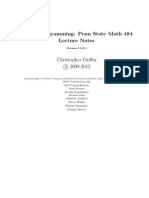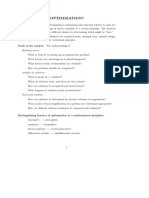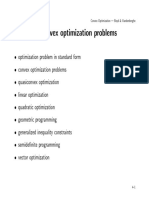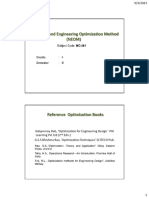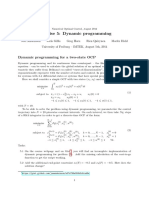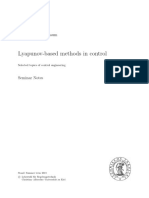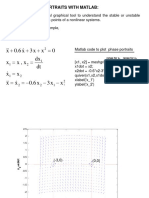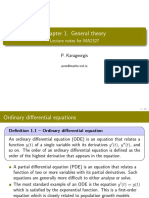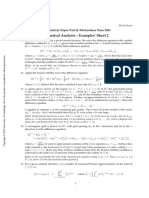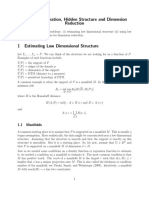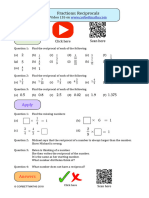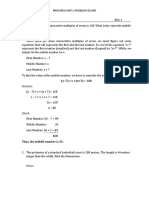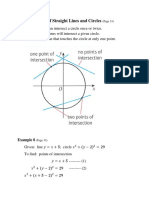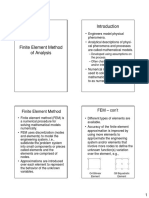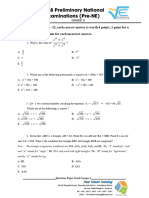0% found this document useful (0 votes)
28 views32 pagesOptimization 1
The document discusses optimization problems, specifically focusing on the Traveling Salesman Problem as a shortest path problem in a weighted graph. It classifies various types of optimization problems including nonlinear programming, convex optimization, and linear programming, and defines the general optimization problem and feasible region. Additionally, it explains optimality conditions and provides an example of maximizing the volume of an open box using MATLAB code.
Uploaded by
Santiago Garrido BullónCopyright
© © All Rights Reserved
We take content rights seriously. If you suspect this is your content, claim it here.
Available Formats
Download as PDF, TXT or read online on Scribd
0% found this document useful (0 votes)
28 views32 pagesOptimization 1
The document discusses optimization problems, specifically focusing on the Traveling Salesman Problem as a shortest path problem in a weighted graph. It classifies various types of optimization problems including nonlinear programming, convex optimization, and linear programming, and defines the general optimization problem and feasible region. Additionally, it explains optimality conditions and provides an example of maximizing the volume of an open box using MATLAB code.
Uploaded by
Santiago Garrido BullónCopyright
© © All Rights Reserved
We take content rights seriously. If you suspect this is your content, claim it here.
Available Formats
Download as PDF, TXT or read online on Scribd
/ 32










